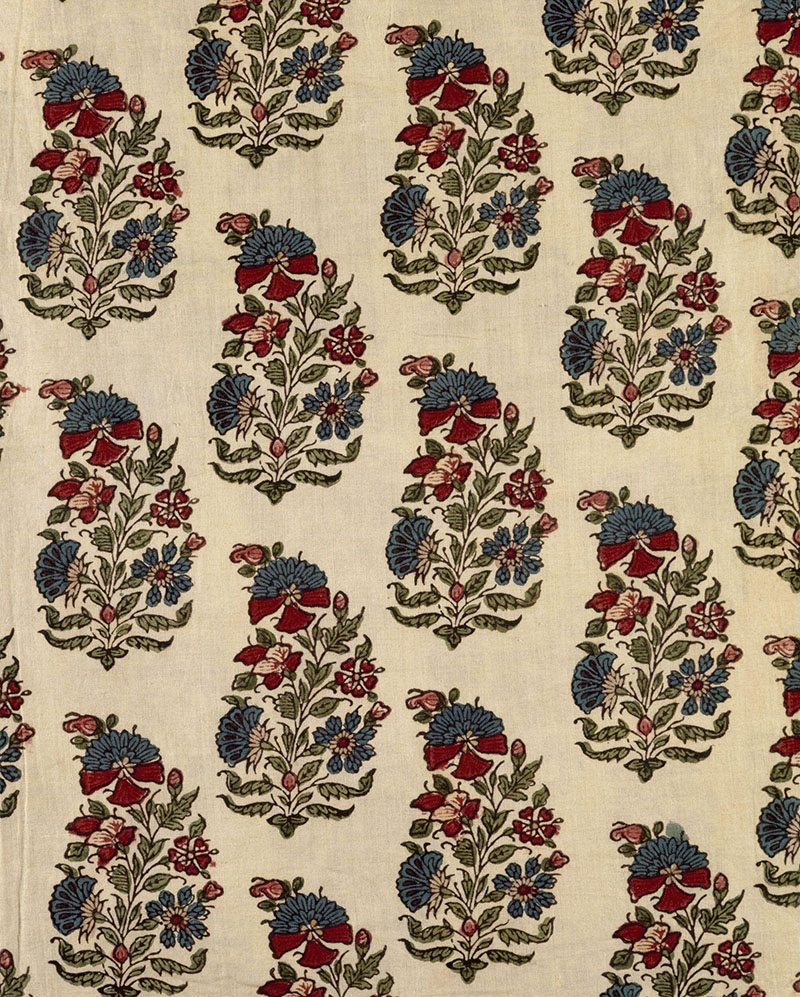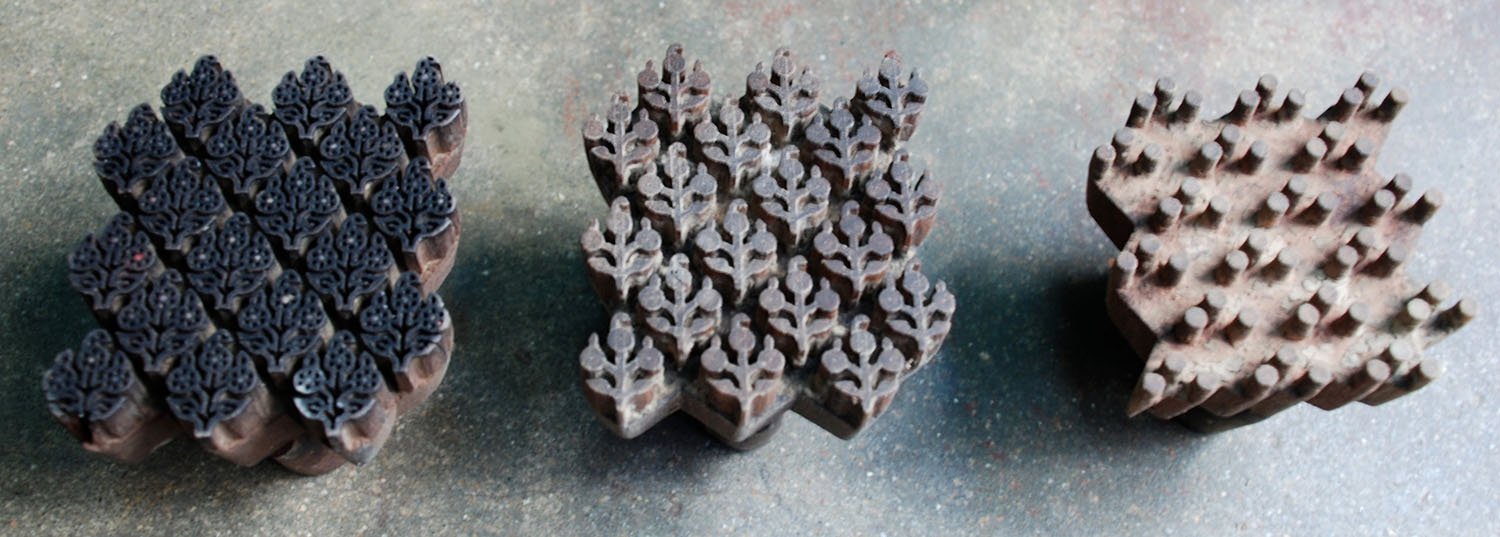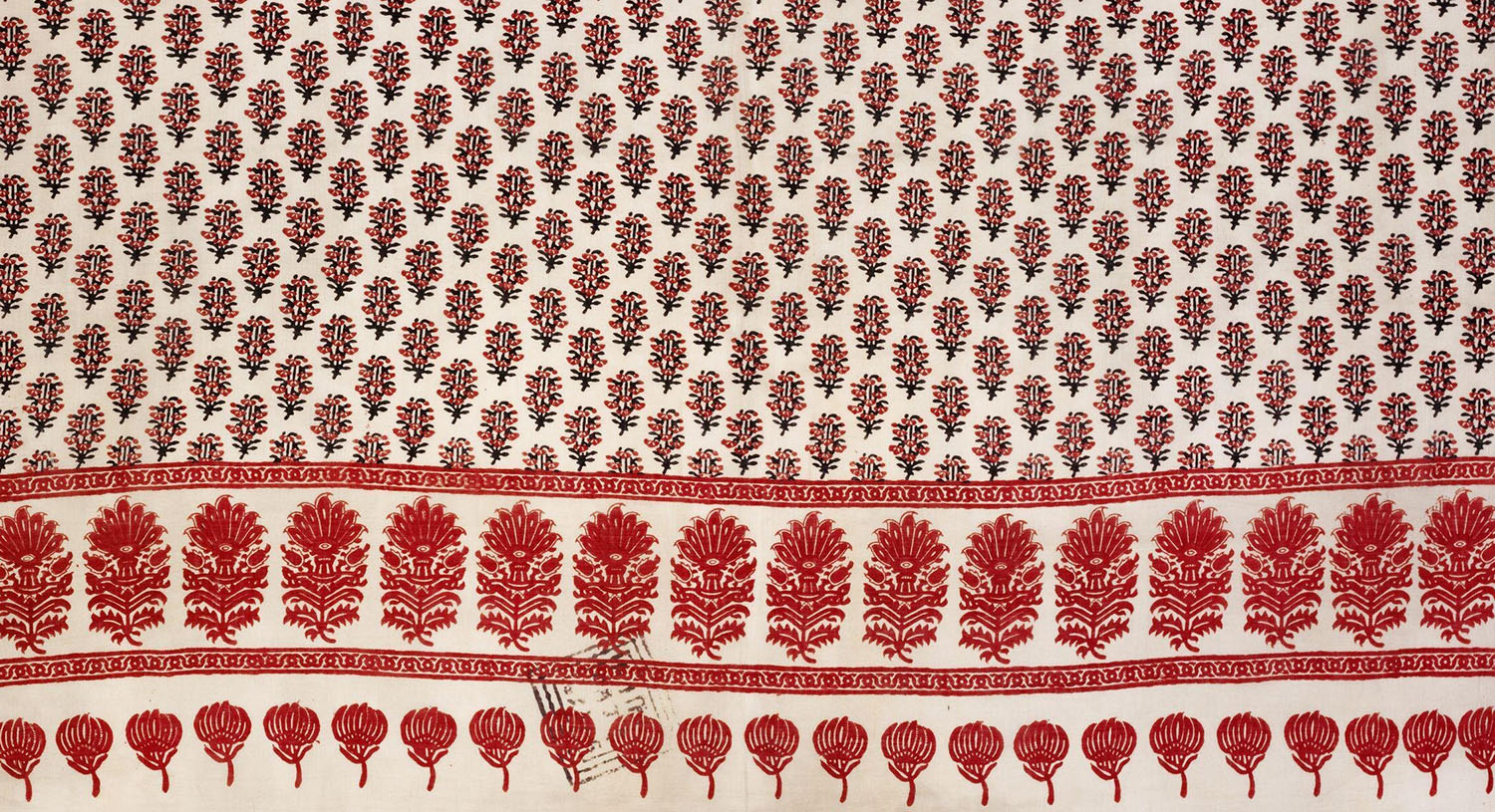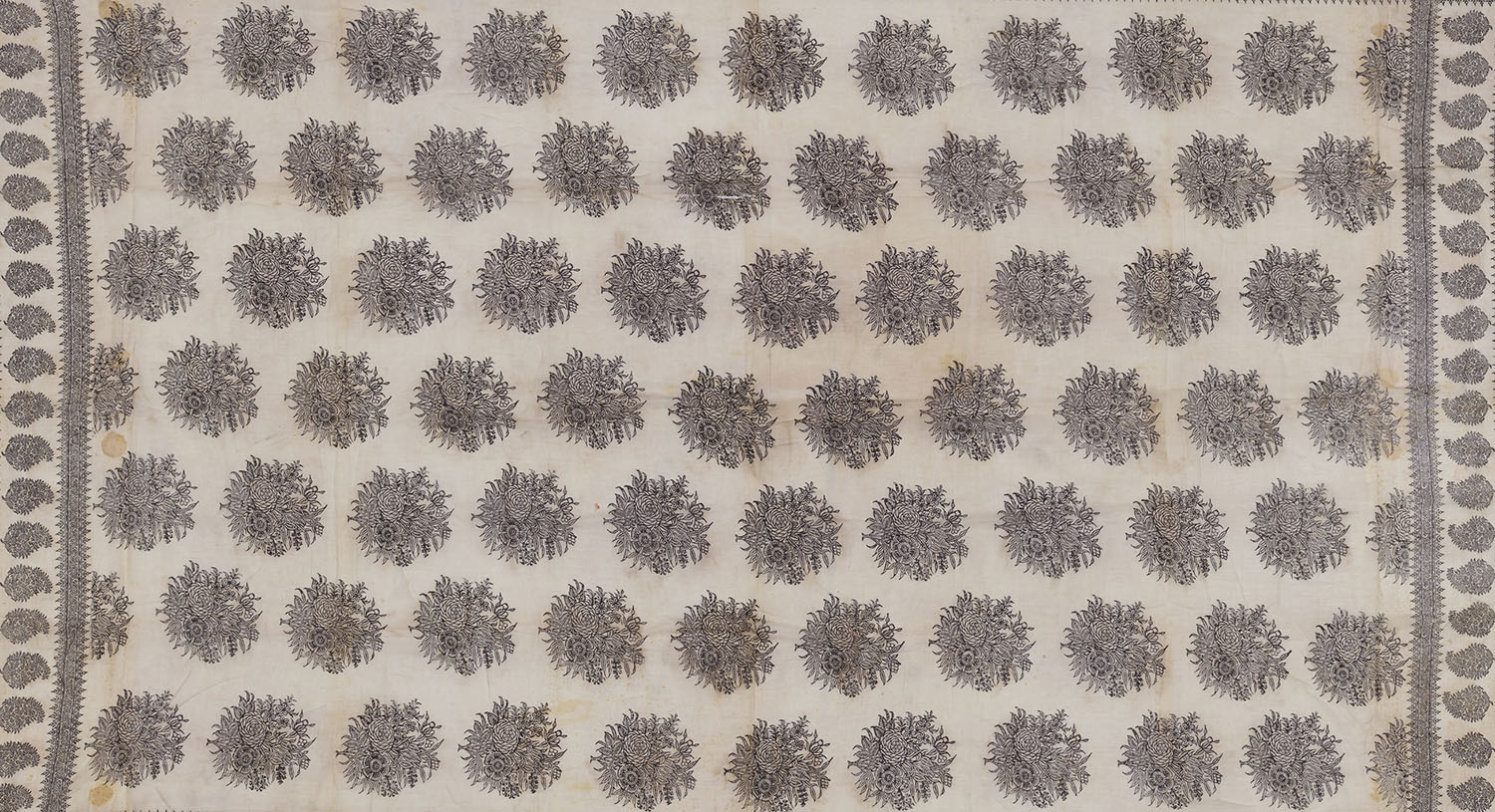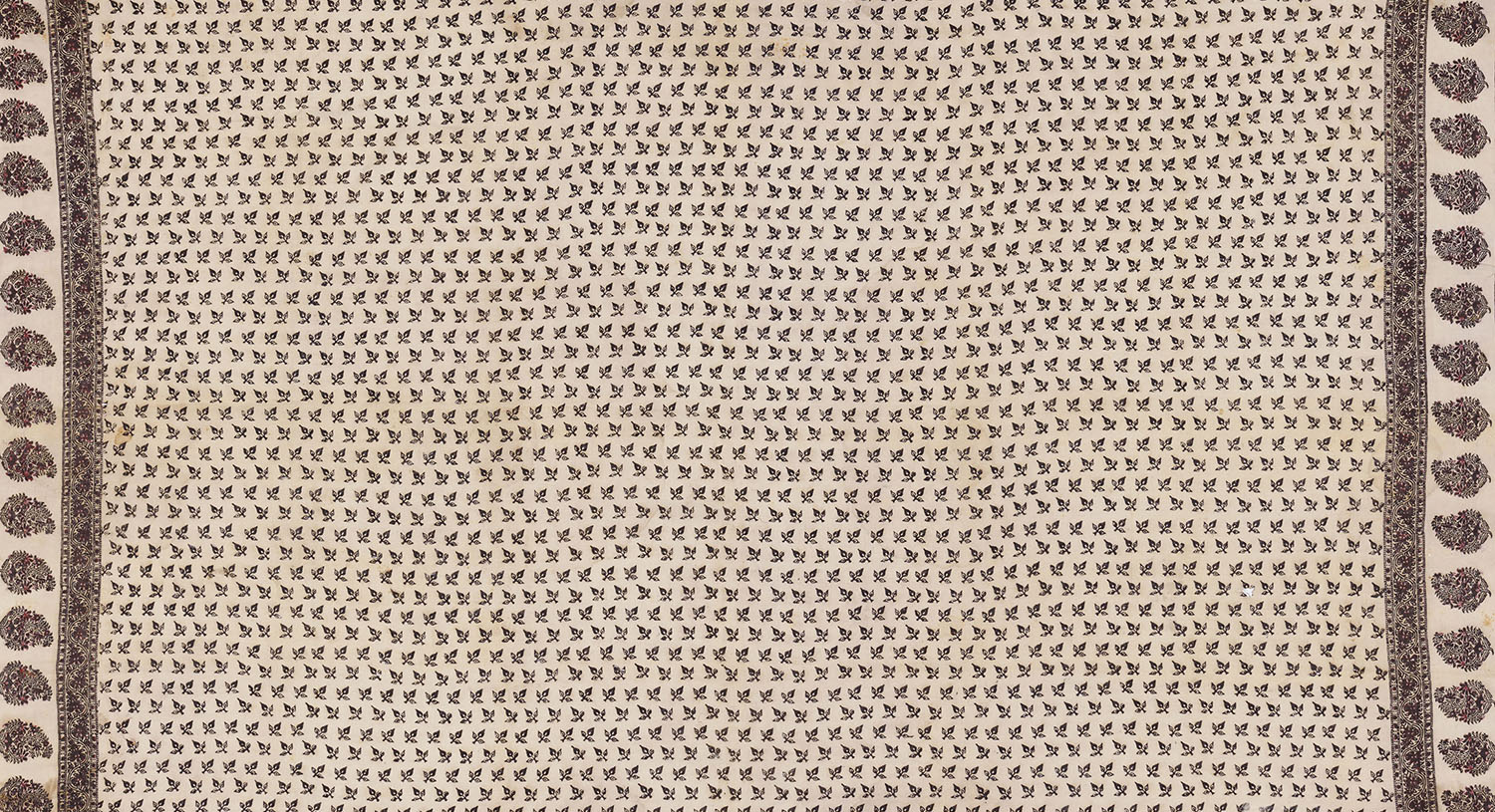ARTICLE
Sanganeri
The blocks used for printing are distinct; they are small in size and have a detailed carving. The small decorative patterns of Sanganeri, known as bhant in Hindi, and include floral patterns, buta, bel and jaali. Over four hundred types of bhants are employed by the artisans. Traditionally, the design was determined in association with the social group or occasion the textile was supposed to cater to. It was thus divided into three, roughly drawn, categories. The syahi begar style rendered black and red designs on white cloth and was used by the local community for safa turbans or angochha shawls. Fabrics and garments with floral motifs on white or soft-toned colours were patronised by the nobility at Jaipur court; influenced by the imagery of Indo-Persian Mughal repertoire, the butas on these fabrics acquired a slant. When made for ceremonial purposes, such as donations at Hindu temples, the dupattas (veils) and shawls bore red designs on either white or yellow cloth. Clothes mimicking the bandhani (tie-dye) patterns were popularly produced for women. It was used in veils such as mali chunnari which had a single and large red circular motif in the centre of the rectangular fabric. It was also used in the mina chaddar shawl which was covered in small red coloured flower-shaped dots on a dark background.
The influence of Mughals transcended the court and influenced the workshops as well. The repertoire of motifs was extended to include flowers such as iris, tulip and narcissus – which were not seen in sanganeri bhant since they were not grown in the area – while the form of plants, foliage and stalks acquired minutiae and curvature. By the late seventeenth century, trade with English and Dutch East India Companies led to further development of the craft and motifs such as the rose – in the form of cabbage rose – made their way to sanganeri.
In recent decades, the craft has faced competition from machine manufactured designs used by fast fashion that mass-produce garments. In 2010, it received the Geographical Indication (GI) tag from the Government of India. As part of the state government’s initiative through Rajasthan Small Scale Industries Corporation (RSSIC), the craft received a significant push for the foreign market, at the expense of local markets. With recently dwindling exports, the artisans, with no support to fall back on, have moved away from their vocation.
Bibliography
Our website is currently undergoing maintenance and re-design, due to which we have had to take down some of our bibliographies. While these will be re-published shortly, you can request references for specific articles by writing to hellomapacademy@map-india.org.




